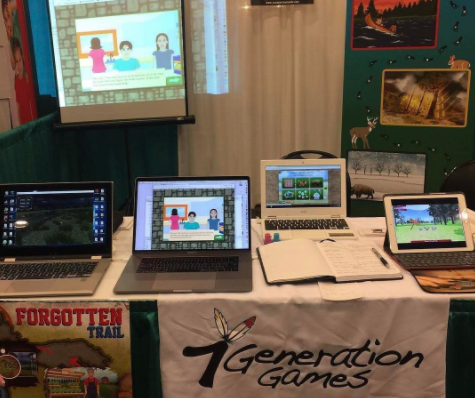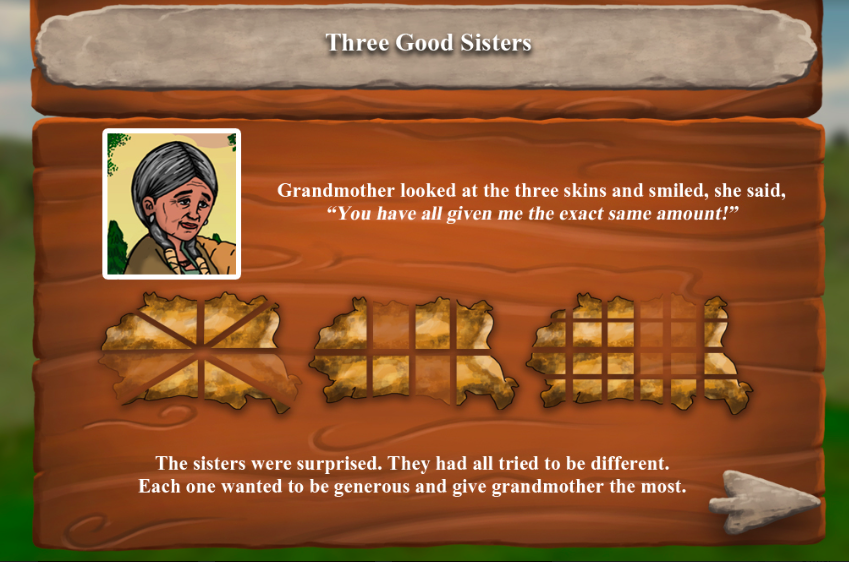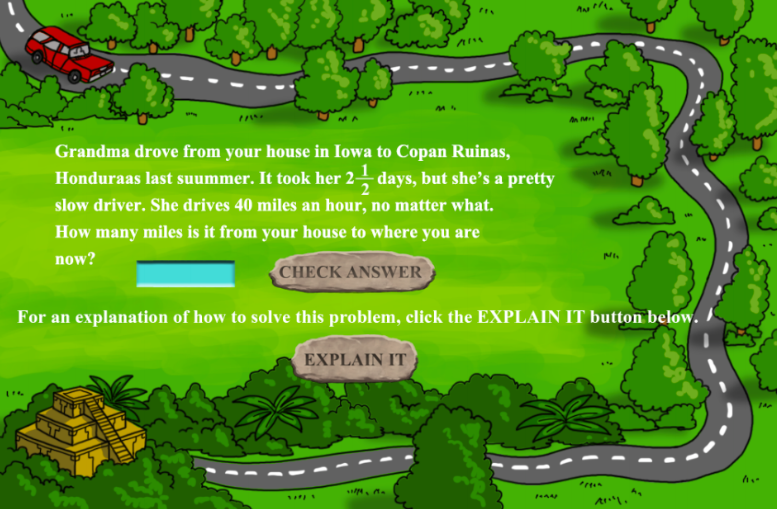
Quality educational games have the ability to revolutionize learning. Of course, the key word is quality – and with so many games and apps on the market, quality can be hard to find.
Did you know there are over 150,000 apps tagged “education” between the Apple App Store and Google Play stores? That’s a lot of “educational” apps and games, but let’s be honest, many of those games, aren’t really that educational. In fact, in many cases, a kid can play through the entire game without learning a thing.
So how can you determine if an educational game is a quality educational game? Here are three big things to look for:
Educational content embedded in the game’s DNA
In too many educational games, the education just seems like an afterthought. As if it’s an element just dropped into an existing game – any existing game, without regard to context or content.
 There a lot of games that are “education AND…” That is “spelling AND shooting” where you shoot the misspelled word. Or “math AND racing” where you solve and equation and your car edges ahead. But would it make any difference to the make if it where “math AND shooting” or “spelling AND racing”? When education is embedded in the game’s DNA, it needs to happen from Day 1– so that the education in integrated in to the game.
There a lot of games that are “education AND…” That is “spelling AND shooting” where you shoot the misspelled word. Or “math AND racing” where you solve and equation and your car edges ahead. But would it make any difference to the make if it where “math AND shooting” or “spelling AND racing”? When education is embedded in the game’s DNA, it needs to happen from Day 1– so that the education in integrated in to the game.
Instead of equations falling from the sky, a good game will have the education woven into that game. For example: You have eight sick people who each need three of an herb to stop a sickness from spreading. Then you go through a virtual world to collect the herbs. Get the answer right answer, and you advance to the next level. Get it wrong, and it’s death (virtual death, but still death). These type of games are harder to develop than “education AND…” games, but they are also a lot more effective.
Real-world applications
 It’s great to be able to correctly spell their, but it’s not of much use if you can’t differentiate it from there or they’re. Likewise, if it’s important to know your times tables, but if you don’t actually know when you would multiply versus divide, it kind of defeats the point.
It’s great to be able to correctly spell their, but it’s not of much use if you can’t differentiate it from there or they’re. Likewise, if it’s important to know your times tables, but if you don’t actually know when you would multiply versus divide, it kind of defeats the point.
Good educational games emphasize the real-world connection to the skills being taught. After all, knowing how to perform a skill is of little use if you don’t know how to apply it. Effective games provide an excellent platform for creating opportunities to use this skills in context – even if it’s a virtual world situation.
For example: Your next set of supplies is 160 miles away and you have 8 days to get there. How many miles do you need to cover each day so you don’t run out of supplies? Suddenly, division is a practical skill, not just something that your teachers say you need to learn. Or let’s say, you need to make sure that you bring back enough fish to feed village. Each person will eat 1 ½ fish and there are 20 people. How many fish do you need? It turns out you actually will use fractions in real life.
Understanding not just how, but when to use something you’ve learned, can make a (real) world of difference.
Actually educates
This is an important differentiator – and one that not nearly enough educational games have. We like to play games to see if we can get a little bit better than last time. We like the challenge and the ability improve. What we don’t like is when we’re completely stuck and unable to advance. When you’re playing an educational game, this should mean that you’re improving on the concepts or content the game covers – and that the game provides you the information to help you advance. But too many educational games have fallen into the “drill-and-kill” approach, where wrong answers just lead to more problems. This means that users either just end up guessing, in which case, they’re not using an educational skills, or they give up. Good educational games should encourage, not frustrate kids.
 For example: If a problem is asking you 5 x 7 and you get it wrong, the game shouldn’t ask you 5 x 4, then 5 x 5, then 5 x 2 and let you keep getting every answer wrong without providing you any help in solving the problems. If a player doesn’t know how to multiply by 5s, a never-ending stream of problems that require multiplying by 5 isn’t the answer. Instead, a good game will have an element that will explain and/or review how to multiply by 5. This could be done in a number of ways – one of the many great things about games is they are a multimedia format. Then, armed with this knowledge (and ideally practice), the user can take these skills and put them into practice to advance in the game. In this way, the learning is actually a skill that will allow the player to get further in the game.
For example: If a problem is asking you 5 x 7 and you get it wrong, the game shouldn’t ask you 5 x 4, then 5 x 5, then 5 x 2 and let you keep getting every answer wrong without providing you any help in solving the problems. If a player doesn’t know how to multiply by 5s, a never-ending stream of problems that require multiplying by 5 isn’t the answer. Instead, a good game will have an element that will explain and/or review how to multiply by 5. This could be done in a number of ways – one of the many great things about games is they are a multimedia format. Then, armed with this knowledge (and ideally practice), the user can take these skills and put them into practice to advance in the game. In this way, the learning is actually a skill that will allow the player to get further in the game.
Here are a few more things to look for and things to avoid when looking for good education games.
Avoid: Games that allow you to guess and go on.
Look for: Games that provide clear feedback as to whether an answer was right or wrong.
Avoid: Games that aren’t clear on what’s being taught. In other words, go with the game that teaches numbers over “number sense,” or algebra over “algebraic thinking.” Buzzwords are often a way to avoid having to demonstrate tangible skill improvement.
At 7 Generation Games, we know a lot about what goes into good educational games because we make good educational games. Check out our games today!

